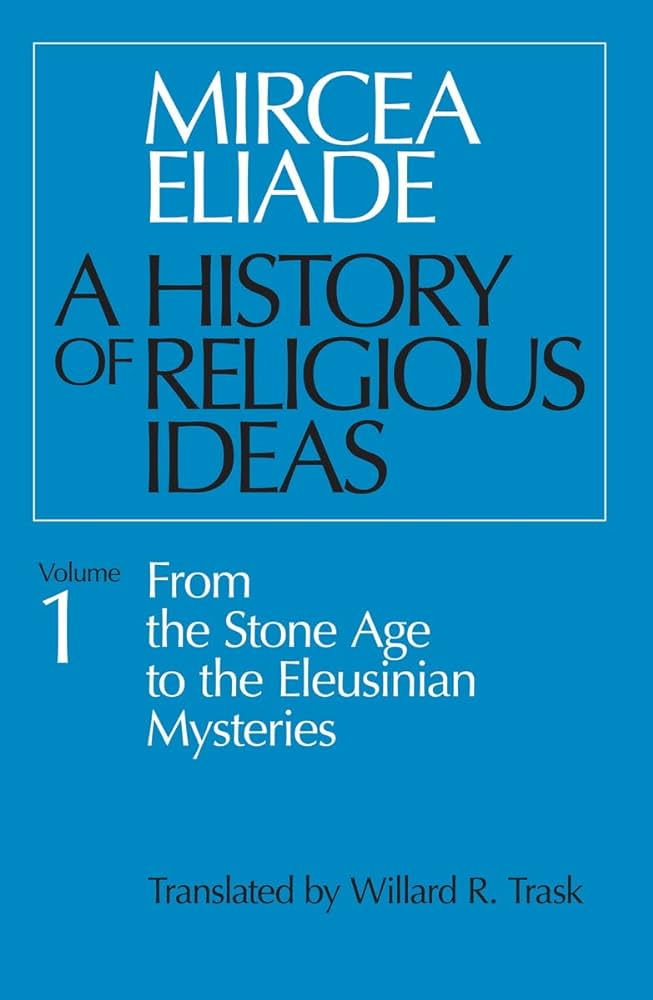
Favourite Quotes
“the ‘sacred’ is an element in the structure of consciousness and not a stage in the history of consciousness.” p. xiiv (first page of preface)
Detailed Summary
1: In the Beginning…: Magico-Religious Behavior of the Paleanthropians
- Historical burials, even dating back thousands and thousands of years ago, indicate the belief of survival, or life after date.
- many bones are buried, even that of animals, in some sort of ritual burial. This can mean many things and there are lots of theories, but one is that the ancient people believed those bones will be ‘revived’ into a new animal.
- one way to tell if a theory is strong is if the belief has survived into later ages. In this case, the idea of an animal being reborn from its bones is quite common. There is a tradition from Norse mythology involving Thor, as well as the Bible where the prophet Ezekiel was transported to a valley full of bones where he said a prayer from Yahweh and flesh started growing on the bones.
- ancient primitive hunters believed that man can change into animals and vice-versa, and that the souls of the dead can enter animals
- Status of Women in History
2: The Longest Revolution: The Discovery of Agriculture-Mesolithic and Neolithic
- We see lots of examples of animal sacrifice to some god or deity during this time (Mesolithic)
- The Mesolithic age is where agriculture and domestication of animals started. In the Palestine area mainly. This is also where humans invented small tools like spearheads, arrow heads, etc. Humans were still mainly food collectors, not food producers.
- Status of Women in History
- one of the oldest temples was in the culture of Obeid in southern Iraq. “The White Temple” dates back to 3100 B.C.
- The Neolithic age is where farming became widespread. People began giving up the hunter-gatherer lifestyle and instead lived off of their own crops. Humans became food producers.
- In the Neolithic age, we see lots of cult objects, sanctuaries, and altars pop up which indicate a well-organized religion.
- Ancient Knowledge
- Neolithic religions had the idea of a life after death.
- This is where iron was being melted down. It was used in religion ceremonies too.
3: The Mesopotamian Religions
- Sumerian Civilization
- Mesopotamian Beliefs
- The Babylonian prayer (explained on page 69) sounds like Islamic prayer
- further proves that the prayer was simply witnessed by Muhammad and he copied the idea
- Islam Plagiarizing Other Religions
- “Babylon” comes from “Bab-il-ani” which means “Gate of the Gods”, because it’s said the Gods came down in Babylon
4: Religious Ideas and Political Crises in Ancient Egypt
- Ancient Egypt
- After the major civil war, the land was divided into 2 kingdoms. It was eventually reunited, but then on the religious power decreased as people saw the Pharaohs not behaving like Gods, so they started to doubt everything they knew about their religion.
5: Megaliths, Temples, Ceremonial Centers: Occident, Mediterranean, Indus Valley
6: The Religions of the Hittites and the Canaanites
Ancient Anatolia Ancient Palestine
7:“When Israel Was a Child…”
8: The Religion of the Indo-Europeans: The Vedic Gods
9: India before Gautama Buddha: From the Cosmic Sacrifice to the Supreme Identity Atman-Brahman
10: Zeus and the Greek Religion
11: The Olympians and the Heroes
12: The Eleusinian Mysteries
13: Zarathustra and the Iranian Religion
14: The Religion of Israel in the Period of the Kings and the Prophets
- it’s well known that the mystics/prophets of almost every religion experienced ‘madness’. p. 343
15: Dionysus, or Bliss Recovered
Analysis
Notes and Quotes
- content has been directly linked to idea using the summary section
Main Idea of the Book
- this book covers a comprehensive history/overview of religions and religious ideas going back to cavemen times to Greek religion.
Reflections
This is a type of book that requires two or three reads. There’s simply too much content.